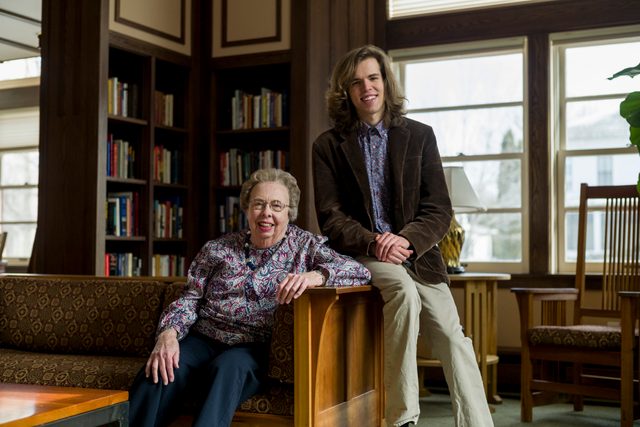 Emerita professor Anne B. Mayer’s planned giving extends her Carleton legacy
Emerita professor Anne B. Mayer’s planned giving extends her Carleton legacy
Like a stirring sonata, Anne Mayer’s generosity will echo for generations to come. Mayer, the Dye Family Professor of Music, Emerita, spent more than 40 years sharing her passion for music with Carleton students, teaching theory, piano literature, and keyboard harmony, as well as coaching chamber music. To build on this legacy, she named Carleton College a beneficiary of three different planned gifts, including a bequest in her revocable living trust, a unitrust, and a charitable gift annuity.
As an advocate for a liberal arts education, Mayer says that bequeathing part of her estate to Carleton was a natural fit. “I want to make a gift that keeps on giving after I’m gone,” she says. “I hope students continue to benefit from it.” In 2006, Mayer also established the Anne B. Mayer Endowed Music Scholarship Fund, which provides funding for music lessons. Investing in sheet music, instruments, and buildings is important, Mayer says, but so is enabling students to experience music without financial hardship.
The funding isn’t reserved just for music majors, either. In fact, Mayer notes that some of her most memorable—and gifted—students pursued other disciplines, such as medicine. Former student John Edward Hasse ’71, now an American music curator for the Smithsonian Institution, was a Black studies major.
One current recipient, Chris Nootenboom ’16 (Portland, Ore.), is a biology and environmental studies major and trumpeter in the Carleton orchestra who used the scholarship to offset the cost of vocal performance lessons. There, he says, he was able to correct bad vocal habits learned earlier in life. “The scholarship has allowed me to grow as a musician without the added financial pressure typically applied by music lessons,” Nootenboom says. “I couldn’t have done it without this scholarship.”
Mayer believes music deserves a role in everyone’s lives, even those who don’t perform or play. “We’re building patrons of the arts,” she says. “It becomes a lifetime interest. They become the audiences of the future and the donators of music and art programs.”
